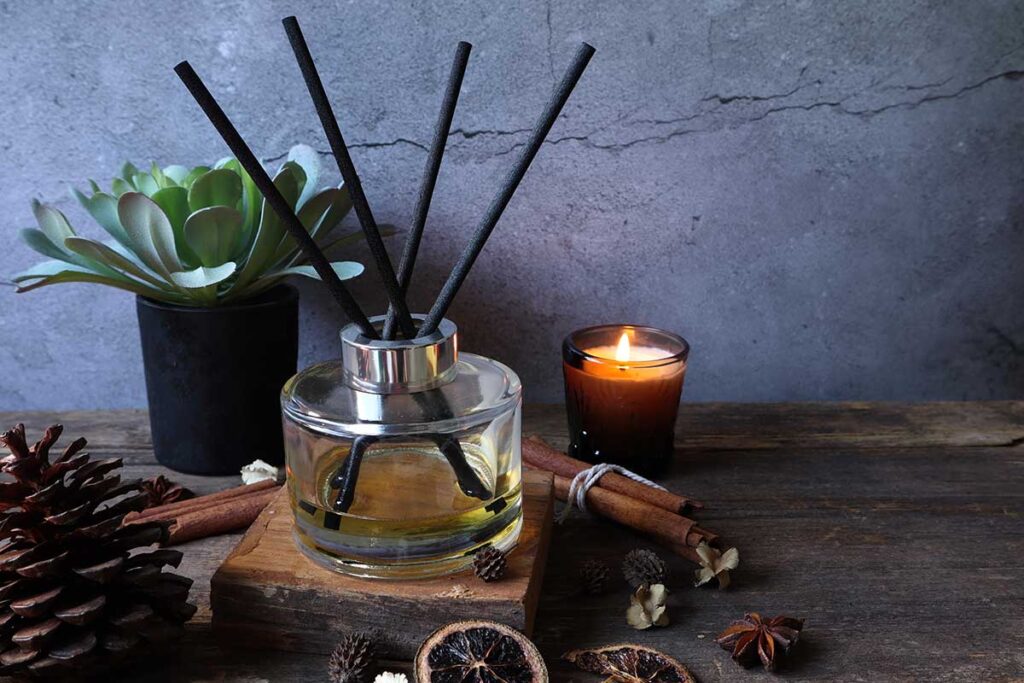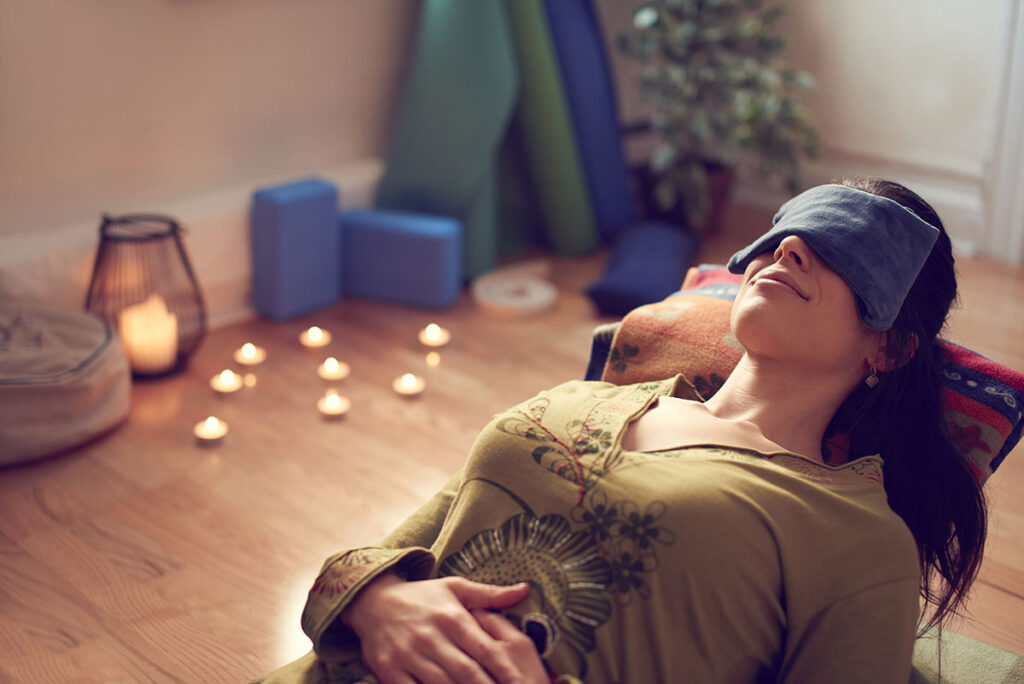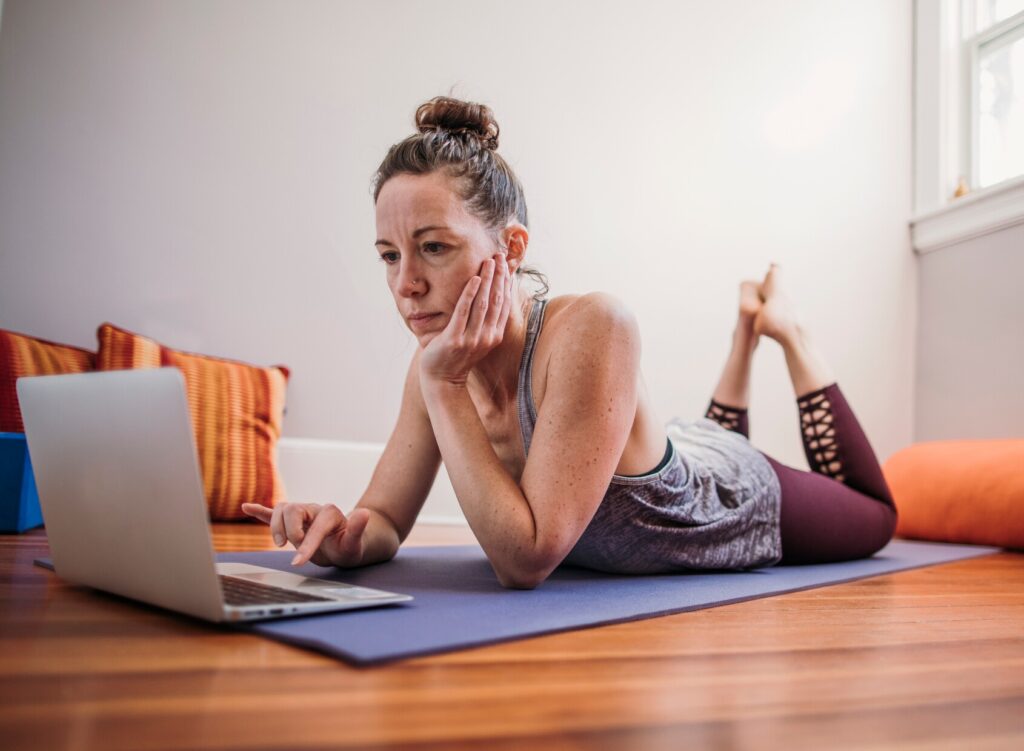I've recently been thinking a lot about what it might take to create an at home retreat.
Have you ever thought about this and sought out ways to build a "retreat home space" to pull off an at home retreat?
On April 12th, 2023, two weeks ago, I went to my first in person meditation retreat for 5 days. It was a wonderful and truly enlightening experience that took me to some new places in both my spiritual journey but also so much deeper in my mindfulness practice. It totally fed my soul and tapped into a joy and calm that is difficult to experience without some serious intention and planning, or at least this is what I am going to explore and start testing.
Have you ever attended a retreat and had a similar potentially life-changing experience? Or maybe it was an exotic vacation or even an amazing spa experience. And after it, had you ever thought about creating an at home retreat experience to try to recreate even a small bit of what this great retreat experience delivered?
Well, if you had, that is what I am going to discuss today. If you pulled this off share your comments below about how it went or is going for you. If you’ve never thought about this, but I’ve piqued your interest then stay tuned as I share some thoughts on the “at home retreat” idea and some other thoughts on setting up a “retreat home space” to launch this idea or at least try it out a time or two.
Who Else Wants to Plan a Retreat at Home? What Would It Take?
When your house is full of adults living and potentially working from home like I do, and children playing, watching TV, and/or studying, again like I have, you might crave some quiet moments for reflection. It can sometimes be tough to get quiet time to just calm down and stop to be present.
I meditate in bed every morning before the family gets up and this is wonderful, but it IS NOT a deep retreat type experience – but it is wonderful for the daily practice. I’ll never stop my daily meditations as they lay the foundation for my wellbeing.
A retreat at home however could be just as meaningful and relaxing as traveling to a cabin in the woods, a wellness conference, or a spa or meditation retreat.
Taking time out may also cheer you up if you’re feeling sad and anxious about the longterm changes that the pandemic caused or just the chaotic situations of life or the world.
Calm your mind and lift your spirits with these suggestions for retreating in place.
Setting Goals for an At Home Retreat
There are many varieties of retreats. Forming an intention will help to narrow your options and guide your efforts. I am actually training to become a lay leader in my meditation sangha. Part of the training requires doing, a Day of Mindfulness, 60 times a year. I assume this is part of the training not just for wellbeing, but also to build a stronger practice and experience for my future leadership role. Lead by example so to speak.
What I found talking to several leaders already where I am try to get to was that this at home retreat thing is not always an easy task. So this really got me reflecting in my free time at the retreat. I went off to a wooded area to reflect on what would make a good “at home retreat” for me.
My first thought was I need to make this something fun.
Being that a sangha is Buddhist in nature, some of my ideas were to do things I enjoy related to Buddhism – study sutras I’ve been meaning to get to but never have time for, tea meditation, eating meditation, learn and listen to Buddhist songs, get out in nature, do yoga, and the list goes on and on, but you get the picture.
Set your intention and goals, and in my experience, try to make it fun and something easy to do instead of something overwhelming.
You might want to try one of these popular goals:
1. Rest and Relax.
Relieving stress may be your top priority. One morning of restorative yoga and deep breathing could reduce inflammation and fix many sleep issues.
2. Increase your Mindfulness.
Living in the present moment and letting go of judgements builds resilience. Center your retreat around meditation and other mindfulness exercises.
3. Deepen your Spirituality.
Retreats can be adapted for any religious or personal beliefs. Your mind is the only thing you need to have a sacred experience.
A retreat home experience could be for those none religious folks or even those deeply religious. To me it depends on your intention and to make this work it will need to serve you. For the religious folks you may set aside some time to read or study the Bible, Torah, Quran, Bhagavad Gita, or Buddhist Sutras.
If you are not religious you might deepen your spirituality by connecting with nature, meditating, volunteering, spending some quit time alone to self-reflect a bit, practice gratitude, start journalling, and you could start a new or revive an old creative practice.
Preparing for the Home Retreat and Establish a Retreat Home Space

Take care of the details in advance. That way you can settle back and nourish yourself when your retreat day rolls around.
As I said… at my previous in person mindfulness retreat, I took about 20 minutes to think about what might be a fun for an at home retreat for me, and I wrote a list.
Then I got back home and took some time to acclimate back to my normal life and catch up on the 5 days I was gone, but I also spent some reflective times that first week to plan out a schedule of things I wanted to do for the day.
This was me, trying to recreate a retreat home experience as much as I could without getting too crazy.
My first Day of Mindfulness went off without a hitch and although I didn’t follow the schedule completely I did several things on the list and added others that worked for me during the day.
It was a wonderful first attempt for me. It was partly successful because I did a little preparation work.
Here are Some Ideas to Consider for Your At Home Retreat
1. Arrange Your Retreat Home Space.

Maybe you already have a meditation room or a nook with a shrine or a collection of books or videos on your area of interest.
Whatever space you use, try to find somewhere quiet and decorate it with objects that inspire you. Early on I wouldn’t get too hung up on making the perfect spa or meditation retreat home space.
Don’t stress out over this, but if you do this on a fairly regular basis you could invest in furniture, cushions, alters, art work or whatever over time.
2. Create an At Home Retreat Program or Loosely Planned Schedule for the Day.

Would you host a meeting without an agenda? A written program or schedule will help you structure your activities and use your time constructively.
As I already said in my own experience this week I had created a schedule and blocked out 30, 60, or 90 minutes for different things I wanted to do. I had roughly 8 hours booked and the first half of the day I did a lot of the items on the schedule.
In the last half of the day I trusted my gut and just practiced what felt right at the time. I did some thing from my list and some new things that felt more aligned with my headspace at the time.
So again, don’t stress out or be rigid, just go with whatever comes up, but commit to being aligned with your intentions for this home retreat.
For me it helped to have a list of like 20 options that I would like to do in my home retreats.
What I found is I had my schedule booked too full and I was unable to do it all. Now I know and I might let afternoons be more free-flowing instead of completely scheduled out.
3. Browse the Web or this Website for Retreat Home Resources.
Access a vast selection of videos, podcasts, eBooks, and more without leaving home. Search the digital collection at your local library or visit the websites of organizations like Plum Village, Tricycle magazine and Insight Meditation.
You could also search Hellagood Life for free articles, or free resources, maybe some free meditations, or even some of the more advanced stuff that I charge for in the online store.
Some other resources that might be helpful are the Hellagood Life YouTube channel and the Hellagood Life Facebook page where I am posting regular inspirational ideas and resources. Feel free to use any of this stuff to support your journey.
Here is a link to some Christian Retreat info and resources. And here is a more non-religious resource and example schedule for a self-guided retreat or at home retreat.
These are just a few of the resources available out there. Do a search for retreat ideas based on what your interests, passions, or intentions are for your retreat. You might be surprised what you find.
I also found a wonderful resource – an audio book that I already owned for a year or so, but listening to it after the retreat made a lot of the ideas just really resonate in a completely different way for me.
In looking for a link to share this resource I found out that this was actually a movie before it was an audiobook.
Here is a video of the short version that is the audiobook content, but not the full 2 hour film.
It is titled Mindful Living Every Day. This is a great resource for me based on the Zen Buddhist style I practice at retreat and how I practice daily and now at my at home retreats.
Heck you could use this video as the foundation of your own practice if the Buddhist philosophies align with your personal or religious beliefs. It’s pretty brilliant in my eyes.
4. Connect with Others - Build Community as Part of Your Practice.

For more fun and enrichment, be social. Invite your partner or children living at home to join you. Organize a group of friends or church or sangha members to schedule a retreat on the same day and share some of your sessions online.
I actually did two social events on my Day of Mindfulness.
The first was attending my first in person yoga class. The second social event was joining my Sangha group for their regular meeting. So I worked their (our) event into my retreat day.
So I got to meet some potentially new local friends and connect deeper with some already established relationships. It was wonderful.
This was a really powerful part of my day.
5. Limber Up.

Leave your retreat with happy memories rather than a sore back. Stretch daily so you’ll be comfortable sitting for longer periods.
I enjoy adding yoga into my practice and this might be something you enjoy as well. I have a few yoga resources if this is something you are interested in but do not have access to a local yogi or yoga studio.
I am also looking at a Tai Chi class locally, but I have been attracted to Qigong and Tai Chi since I interviewed a friend that teaches this stuff on the east coast. Here is the video interview of Jim McBreen teaching Intro to Tai Chi for Liberation. Have a watch this might be another resource to try for your retreat or look into everything Jim shares in the video.
Enjoying Your At Home Retreat

If you become sleepy or restless while meditating, you may run into similar obstacles during a retreat. In this case of being sleepy while meditating I recommend trying walking meditation or even a Deep Relaxation and be okay if you fall asleep as sleep is important as well.
Some simple precautions like these will help you stay on track:
1. Start Small
Three minutes of focused meditation beats an hour of fidgeting and daydreaming. Respect your limits. Allow yourself to progress gradually.
2. Limit Distractions
Turn off your phone and forget about checking messages for a while. Ask others not to disturb you except for emergencies.
3. Schedule Breaks
Pause for 10 or 20 minutes in between each session. Stretch and walk around. Drink a glass of water or a cup of herbal tea.
4. Dress Comfortably
Layer your clothing so you can avoid becoming too cold or too warm. Choose soft garments with a loose fit. Keep a light wrap handy that you can drape over your shoulders if you need it. I’d assume since you’ll be doing your retreat at home it should be easy to find a comfortable dress for your retreat.
5. Eat Light
Foods and beverages that are easy to digest will keep your stomach peaceful too. Prepare meals and snacks in advance. Good choices include yogurt with fruit, vegetable smoothies, and lentil soups.
At my retreat, they offered only vegan meals. The food was amazing for me and I was surprised that I would thoroughly enjoy vegan food for all my meals for 5 days. For my Day of Mindfulness I try to have a healthy food as possible.
6. Transition Back
You may have little to show for your retreat if you rush back to binge-watching reality shows. Enjoy a closing ritual like chanting or self-massage. Try to remain quieter and more deliberate as you resume ordinary tasks.
Final Thoughts…
Once you’ve completed your first at home retreat, it’s time to start thinking about putting the next one on your calendar. Blocking out time regularly for relaxation and contemplation will help keep you strong and well.
In my experience earlier this week I felt amazing. It was a really wonderful Day of Mindfulness. The funny thing I found was the beautiful energy that I created from my Day of Mindfulness two days ago, it really flowed into the last two days. WOW!! who would have thought this would pour into my regular life.
As I said, I am no expert and only have one retreat under my belt and one at home retreat (Day of Mindfulness) under my belt, however both were amazing. I am excited to see how things progress and maybe I will do a follow up article to discuss this idea further and or just an update after I have several at home retreats under my belt.
I hope you found this helpful and you are able to start to establish your own home retreat.
Peace, Love, and Respect to you, my friend!



